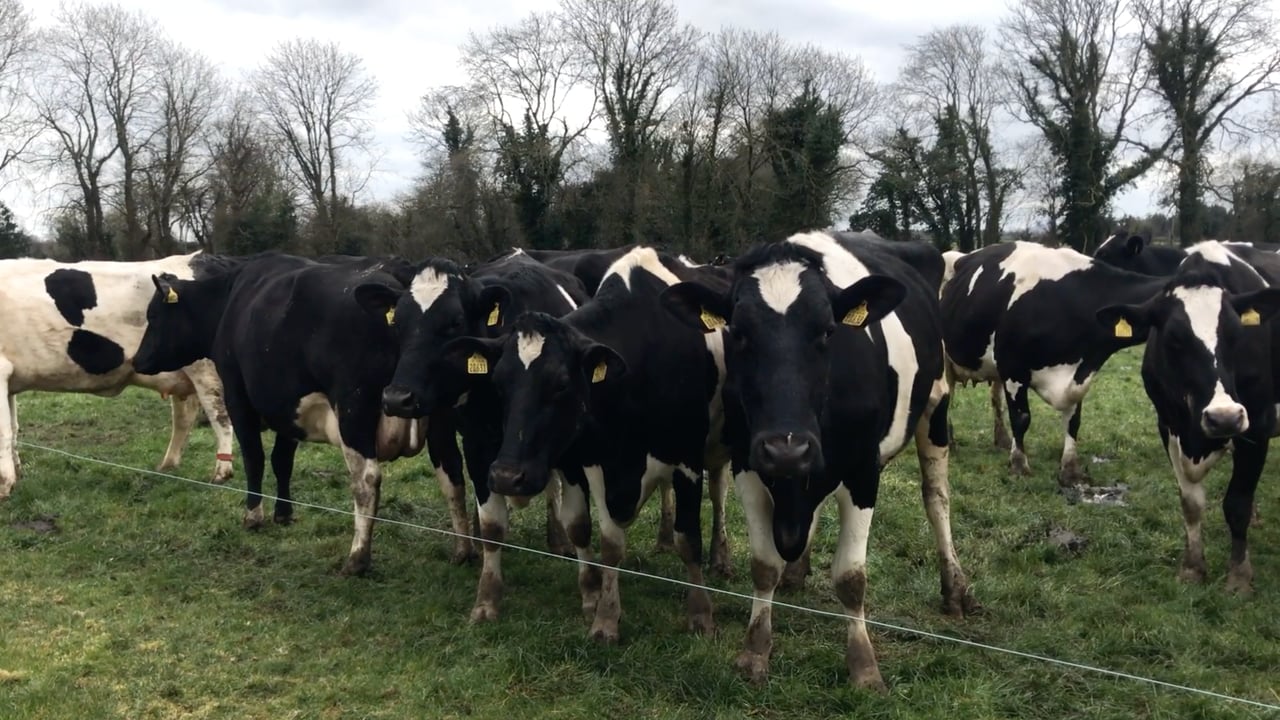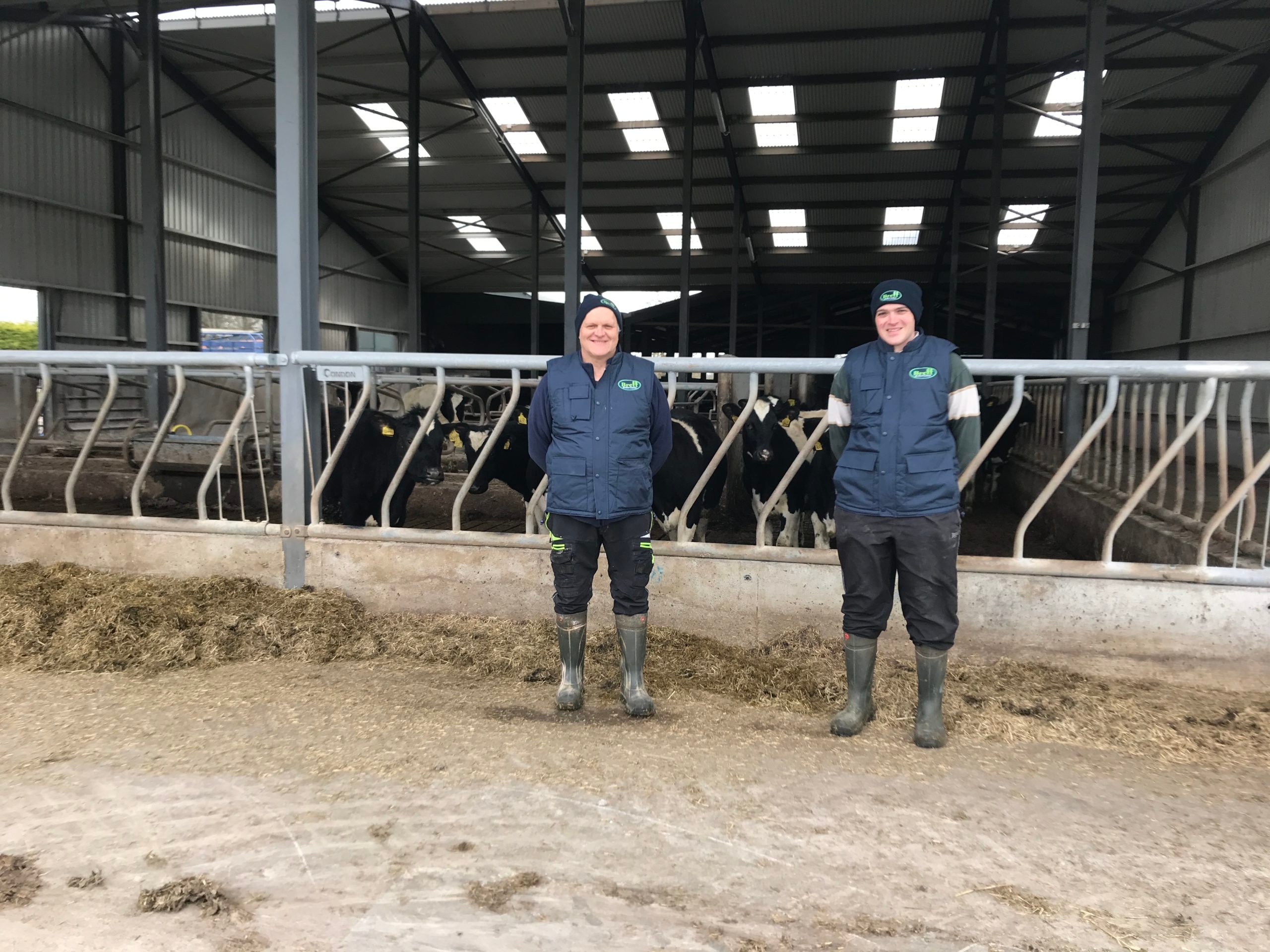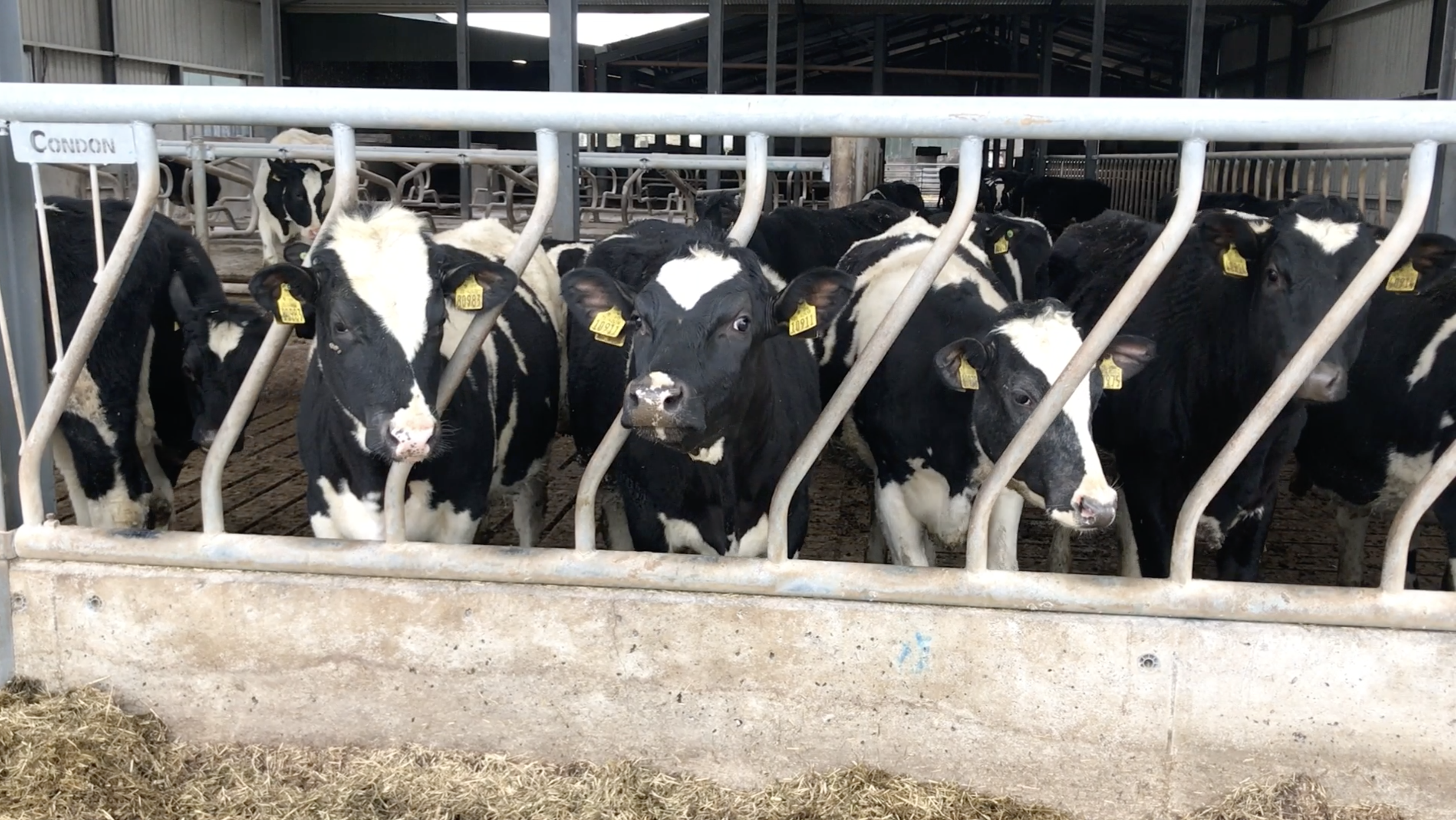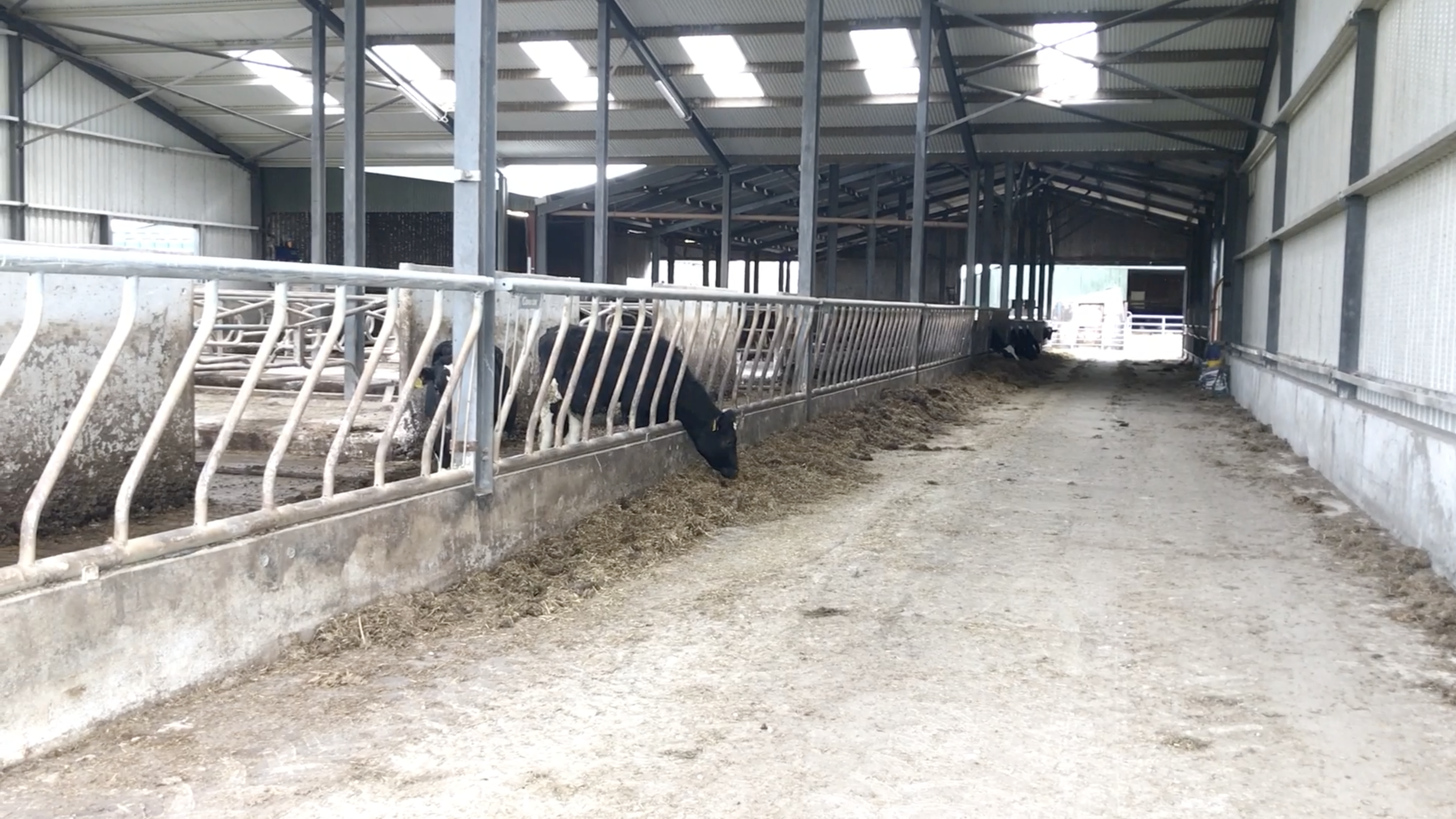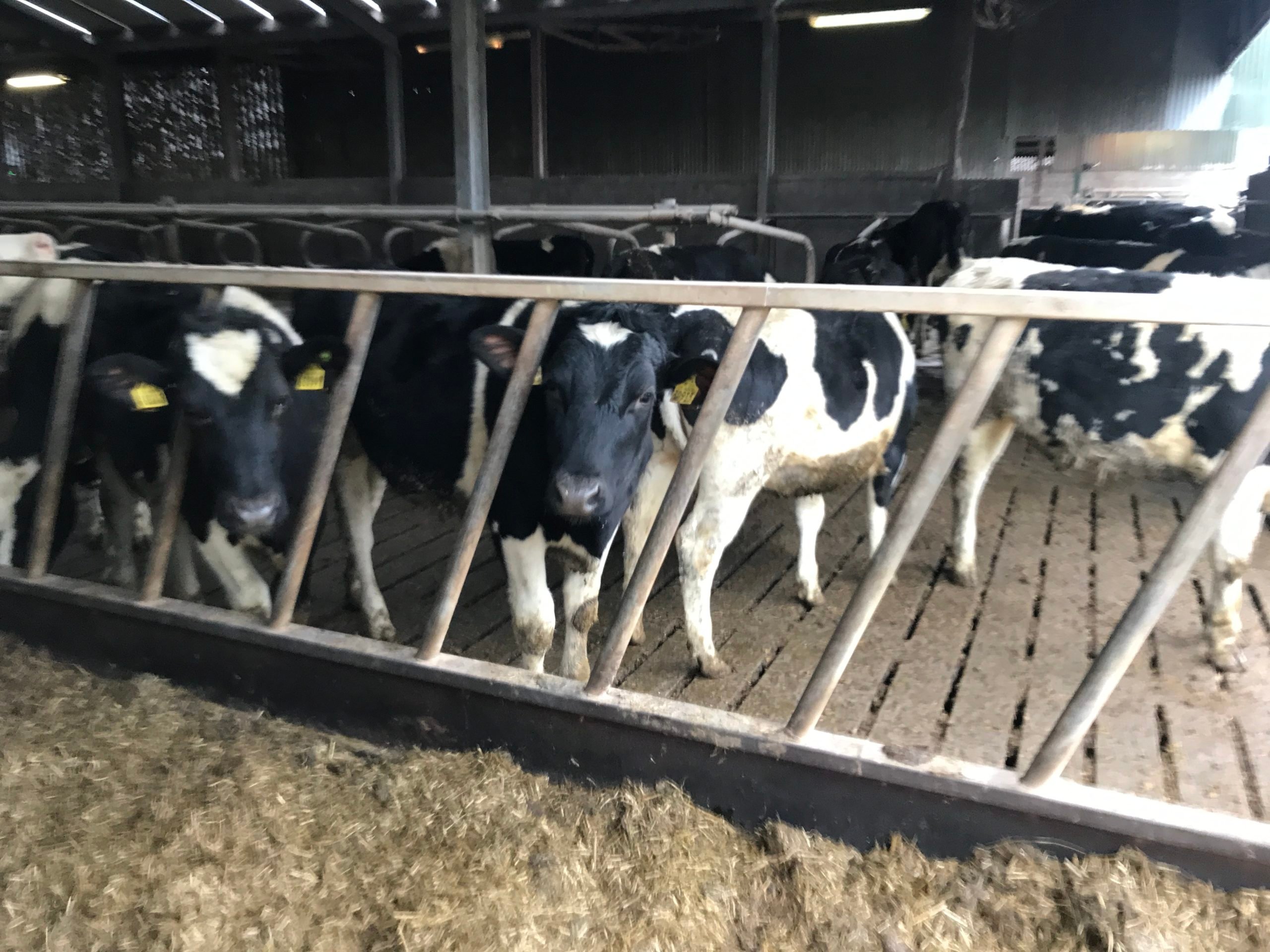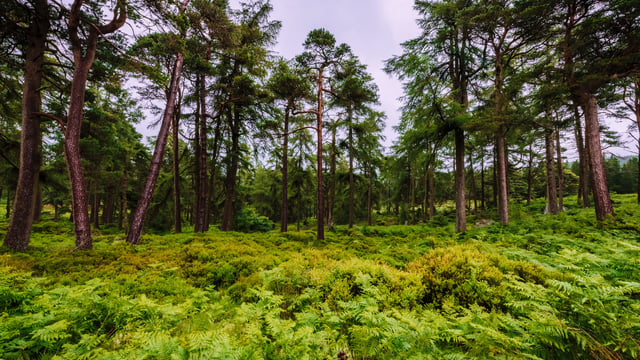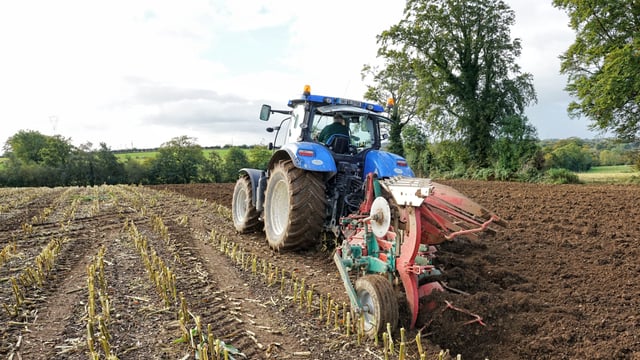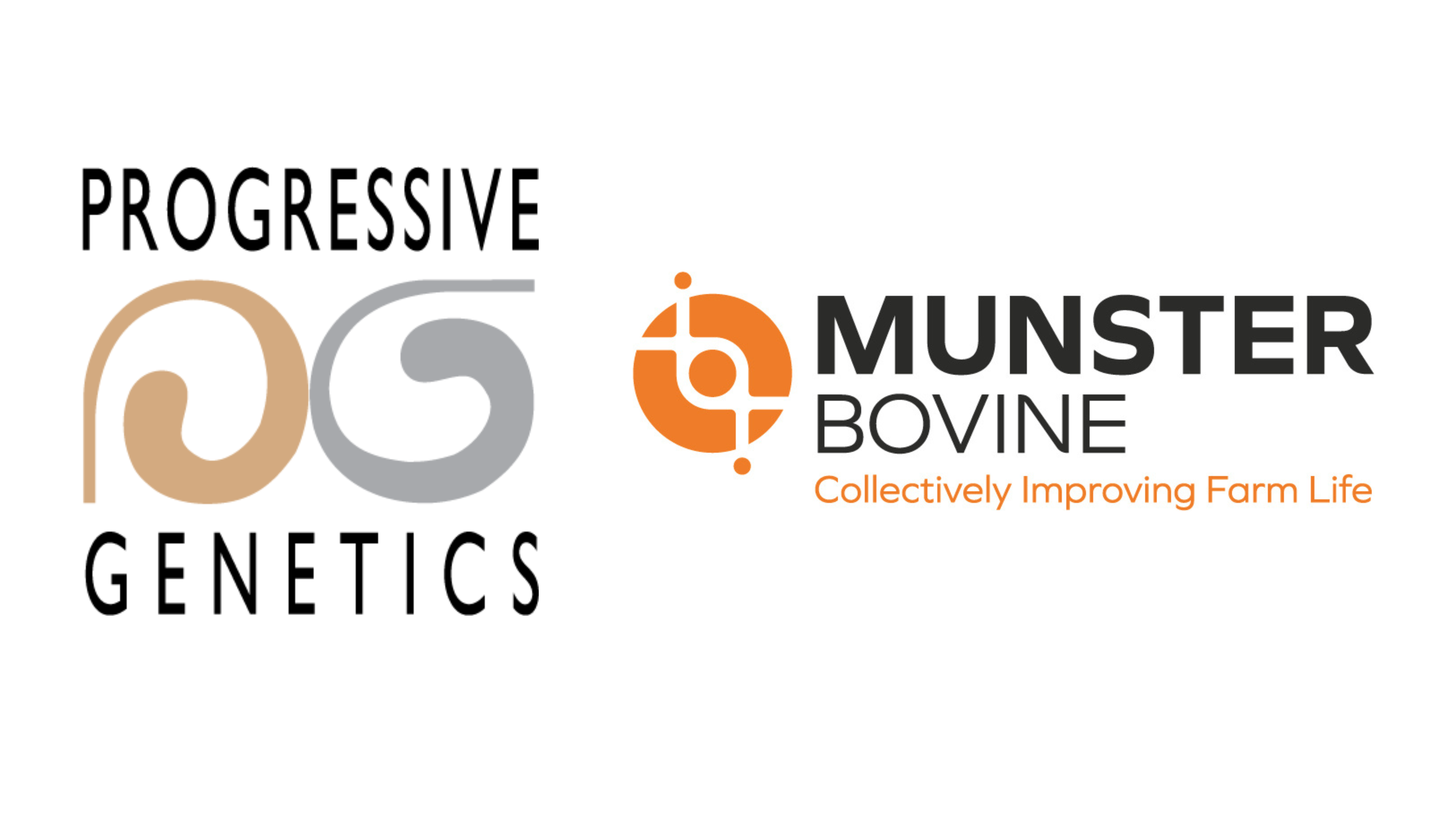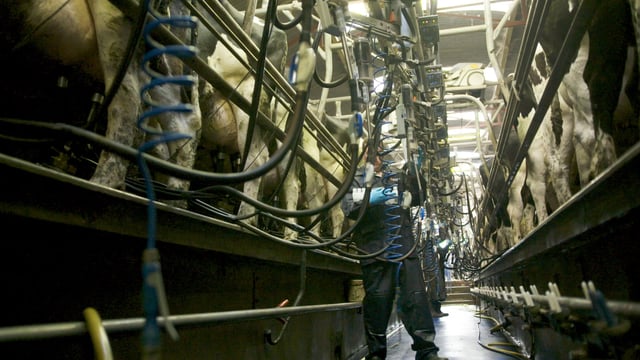Dairy Focus: Improving fertility and milk solids through EBI
For this week’s Dairy Focus, Agriland made the trip to Co. Laois to meet with Trevor Cobbe on his dairy farm just outside of Portarlington.
Trevor farms in partnership with his father Roy, with the pair milking 120 cows alongside a small tillage operation.
A active member of Macra na Feirme, Trevor took part in the FBD Young Farmer of the Year competition last year and won the dairy section.
"Shortly after I returned home I joined the Macra club in Mountmelick and they had been at me to enter the young farmer competition," he said.
"It was a great experience, it would really open your eyes. Even talking to the other farmers that are involved - they are all top farmers - learning about their systems and outlooks.
"I ended up winning the dairy section, which was very surprising and a great honour."
The farm was bought by Trevor's great-grandparents in 1922, with Trevor's great-grandfather passing away two years later leaving behind his wife and eleven young children.
Trevor's grandfather William took over the running of the farm and operated a mixed system with dairy, beef and tillage.
Roy took over the running of the farm at 21 and continued to operate a mixed system, with that system continued on the farm up until 2015.
Trevor returned home from college in 2011 and in 2015, Trevor and Roy entered a farm partnership.
The decision was made to focus on dairy and increase cow numbers. The beef enterprise was stopped and the tillage enterprise decreased.
A plan was developed to increase cow numbers from 45 to 120, with that goal achieved in 2019.
"The plan is to stay at that number. For the land we have, the herd size is comfortable at that and if we increase the cow numbers further we'd have to feed extra concentrates," Trevor said.
"The farm burnt up very badly from the middle of June, on and off until nearly September."
Increasing the herd size required improvements being made to the farm's infrastructure, with the parlour, cubicle shed and grazing infrastructure all being upgraded.
"We had a six-unit milking parlour, which was fine when we had 50 cows but as the herd size increased, an upgrade was needed," Trevor said.
"The collecting yard is at an angle and we are spending too much time milking cows. We are planning on changing it - we're not just quite sure how we are going to do that."
Continuing, Trevor said: "We are considering a new build or extending out the back; we are keeping our options open for now.
"We have continually made improvements to the grazing infrastructure, with upgrading roadways, fencing and reseeding."
Since returning home, breeding has become a passion of Trevors, with the focus on breeding resulting in improved fertility and production on the dairy farm.
A split-calving system was operated on the farm up until the spring of 2016, when the switch was made to a 100% spring-calving herd.
All the cows are bred to artificial insemination (AI) dairy sires and at the time of Agriland's visit to the farm, 106 of the 120 cows had calved, which is just shy of 90%.
A six-week calving rate of 90% has been achieved for the last number of years on the farm.
"When I returned home I took a real interest in the breeding and dad told me to drive on with it," Trevor said.
"There were some very good cows here, mainly British Friesian-types, but we decided that we wanted a bit more Holstein."
Trevor continued: "So we are now working with a 70% Holstein 30% British Friesian-type cow. The first few years I focused on improving the fertility of the cows, now I am focusing on the improved milk solids.
"We also don't want to push it too far, we don't want to get into a cow with too much volume, that requires extra feeding."
"We had to feed extra meal last year which helped with the level of production. I would be hoping that we will be similar to that level this year, with less concentrates."
The main focus on the dairy farm is the use of economic breeding index (EBI), to improve genetics gain and performance within the herd.
The herd was upgraded to pedigree status about ten years ago, with Trevor saying "there was no reason not to and it turned out to be worthwhile".
Continuing, Trevor said: "We went down with bovine TB [tuberculosis] and lost a few cows and the compensation was much better because we went pedigree
"You know when you're using it that those figures are going to be right, now I would always look at the dam's figures when picking bulls.
"Sometimes it doesn't add up, sometimes you get a bull where the figures are high but the numbers don't follow. That why I find it is very important to look at the dam when picking bulls."
The average EBI of the cows is €158; the freshly calved heifers are at €195 and bulling heifers are at €204.
"We usually aim to bring in about 20 heifers each year, last year we had to bring in 29. Our empty rate was up at 14% last year, where it normally is between 5% to 8%," Trevor continued.
"It was very disappointing, but at least we had the heifers here. We would usually keep some extra heifers and once we have picked the ones we want, we would sell the rest.
"I think due to the dry weather and the heat last summer we had a bit of embryo loss, there were a number of other farms in the area that had the same issue."
Giving some insight into the use of sexed semen on the farm in the future, Trevor said: "We tried sexed semen a few years ago and we did not get on that well with it.
"But I was thinking that we might look at it again this year. We have had a awful run of bull calves this year - there are 12 more bull calves compared to heifers this year.
"We are currently using all dairy sires, we used some Hereford and Angus bulls a few years ago and it didn't go all that well for us.
"The gestation is longer, so you're losing seven to ten days on them, you're losing milk and the calves didn't do as well as we would of liked at the mart.
"I would have no issue using sexed semen to get our heifer calves if we can get a beef bull that would suit us."
Commenting on some of the increases to input costs experienced by dairy farmers this year, and some of the mitigation measures he will focus on, Trevor said: "We are hoping to reduce our chemical fertiliser usage by increasing the amount of slurry we spread on the grazing block.
"We have been sowing clover on the farm for the last couple of years, so we are hoping that will also help us offset our nitrogen requirement."
Continuing, Trevor said: "Multi-species swards are something I would be very interested in. I was at a farm walk close to here last summer that had some planted.
"They were getting twice the growth of grass in the dry conditions, which the ways things are going could be a big help.
"We will still have the clover and grass. It will be interesting to see how it works out on farms long-term; does it affect the milk and how long it stays."
Trevor has set up an Instagram account (Doolagh_farm) for the farm to showcase what happens on an Irish dairy farm in a period where farmers are facing a number of environmental and social challenges.
"My issue with a lot of environmental stuff is they are doing the research now, but the rules are already being bought in," said Trevor.
"The research should of been done five years ago, but they just land it all at one time.
"We are not in derogation at the minute, but when the banding of cows is brought in we will be in the top band.
"Some of the environmental measure are no problem, like a lot of stuff will improve efficiencies on farms - the likes of low emission slurry spreading (LESS) and GPS spreading of fertiliser can only benefit farmers," he said.
To read more Dairy Focus articles on Agriland, click here.

